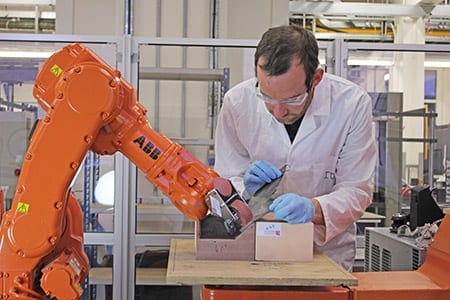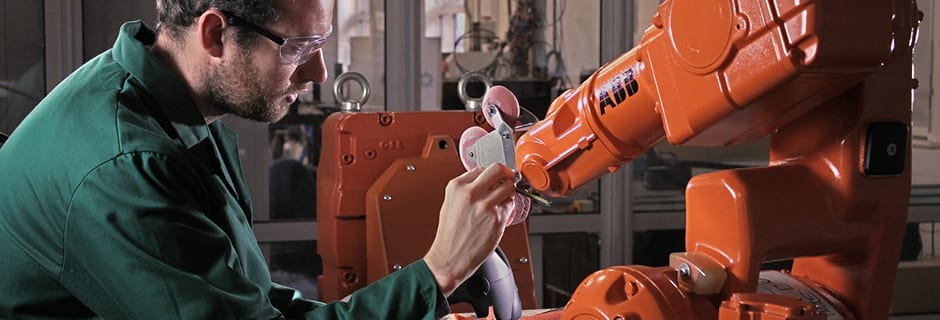The projects at the University of Bristol were originally part of the £6M EPSRC Centre for Innovative Manufacturing in Composites (CIMComp) project. They are being carried forward into the current £10M EPSRC Future Composites Manufacturing Hub, which is led by the University of Nottingham and involves teams at Bristol, Cranfield, Imperial College, Manchester and Southampton Universities, and in the EPSRC Industrial Doctorate Centre (IDC) in Composites Manufacture at the University of Bristol.

Manufacturing of complex, high value composite structures has, traditionally, been a hands-on manual process, where skilled laminators apply thin plies of reinforcement, one at a time, to build up the structures for applications such as aircraft and Formula 1 race cars.
Enabling composites to move out of niche applications and reach the projected 2030 £12B market potential identified in the 2016 National Composites Strategy requires complete reworking and automation of their manufacture.
Understanding and automation
The work at Bristol has focused on high value, high performance applications, and has proceeded on two main tracks:
The first, through IDC projects with the National Composites Centre in the Bristol & Bath Science Park, and its members, has focused on developing and extending the Automated Fibre Placement (AFP) process as it is currently used in industry for large, but relatively simple, aircraft structures.
Understanding of the baseline AFP process has been extensively developed through a combined approach of simulation and experimentation in support of industrial applications; novel material solutions are the current focus of developments.
The second track focuses on how to automate manufacture of more complex structures.
One approach has been to take a new look at AFP and develop a novel solution that allows us to steer the fibrous reinforcement much more readily than in the baseline process, greatly opening up the design space and consequently allowing more creative use of composites.
The last project has been to tackle the most complex structures by carrying out detailed analyses of the way that skilled laminators actually work. This has allowed us to develop low cost support tools that can be used even in small SMEs to control manual processing to maximize quality and minimize labour time.
Robots and cobots
Bristol has moved on to developing the use of robots to directly replace laminators in structures of moderate complexity. The Centre is currently developing approaches where robots and laminators collaborate, with laminators applying their skill where needed and robots doing the repetitive tasks, thus making the laminators much more productive
These projects are proceeding in collaboration with end users and the National Composites Centre, in support of theUK composites industry.

